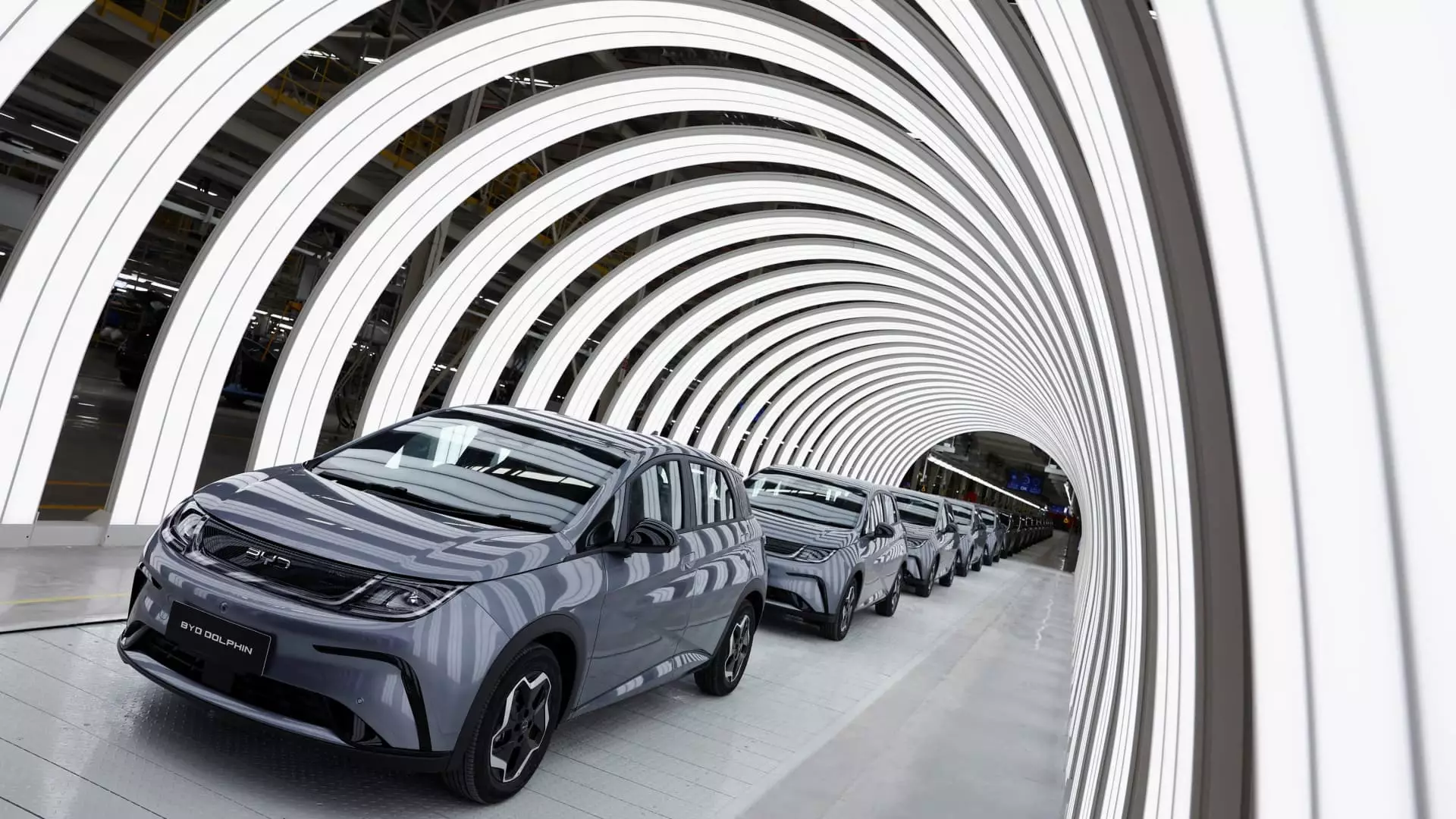The electric vehicle (EV) market is experiencing rapid technological advancements, particularly in driver-assistance systems, where BYD, a leading player, is making significant strides. Recently, the company’s aggressive initiatives focused on enhancing its autonomous capabilities have drawn the attention of analysts and market participants alike. Shares of BYD have surged to unprecedented levels, and its foray into integrating sophisticated driver-assistance systems marks a pivotal moment not only for the company but also for the wider automotive sector.
BYD has recently unveiled a new driver-assistance system that will be available across a variety of its models, including budget-friendly options priced below 70,000 yuan (approximately $9,600). This launch indicates BYD’s commitment to making advanced technology accessible to a greater range of consumers. The company’s integration of DeepSeek’s AI technology within this system underscores its focus on leveraging cutting-edge innovations to enhance the driving experience.
Analysts from Nomura have highlighted that suppliers associated with this new driver-assistance ecosystem are poised for considerable growth. As the automotive landscape evolves, the demand for sophisticated smart driving components is expected to rise across the board. This trend signifies a shifting paradigm where traditional automotive manufacturers must hasten their adoption of smart technologies to remain competitive.
The unveiling of BYD’s driver-assistance system comes at a critical juncture in China’s electric vehicle market, which is characterized by intense competition. Tesla, a dominant player known for its own Full Self-Driving technology, recently faced a dip in its stock prices following BYD’s announcement. The competition is not merely about electric vehicles but also about who can offer superior driver-assistance technologies.
BYD’s advancements have implications that extend beyond its lineup. Companies supplying components for these technologies—or looking to enter this market—are likely to see an increase in demand. For instance, firms like BYD Electronics, Horizon Robotics, and lidar innovator Hesai Technology stand to benefit from the growing emphasis on driver-assistance features.
Among these suppliers, ONCRO (a pseudonym for suppliers like Horizon Robotics and Hesai Tech), which offers advanced chips and lidar technology, is well-positioned to capture market share. Goldman Sachs analysts have raised their projections for Horizon Robotics, anticipating a substantial increase in its earnings driven by BYD’s need for innovative semiconductors capable of supporting autonomous functions. The analysts have outlined a rosy outlook for Horizon’s Journey 6 chipset series, predicting that its contribution to the company’s overall revenue will rise significantly by 2027.
Hesai, meanwhile, despite facing challenges related to U.S. government scrutiny, has experienced a rebound among investors following analyst upgrades. This highlights the resilience and potential of companies that specialize in technologically advanced components for autonomous systems, even amidst geopolitical tensions.
With projections indicating that BYD will equip over 3 million vehicles with advanced driver-assistance functionalities this year alone, the revenue potential for component suppliers is substantial. Such systems, being more complex and expensive than traditional automotive technologies, pave the way for increased profit margins for companies like BYD Electronics. The financial implications for these suppliers are significant, with analysts forecasting substantial growth trajectories based on this burgeoning demand.
Furthermore, BYD has adopted a tiered approach to its driver-assistance offerings, utilizing different technologies based on vehicle price points. This includes collaborations with prominent firms like Nvidia, whose chips will power various iterations of BYD’s advanced systems. The incorporation of lidar technology from companies such as Hesai represents a critical investment in high-precision navigation for urban settings.
BYD’s emergence as a leader in driver-assistance systems marks a transformative chapter not just for itself but for the entire automotive ecosystem. With analyst forecasts signaling growth for its suppliers and mounting pressure on competitors to innovate, the trajectory of the automotive market is set to shift. Companies that fail to adapt may find themselves at a disadvantage, emphasizing the importance of investment in advanced technologies.
As the landscape continues to change, BYD’s strategy will likely serve as a blueprint for a generation of electric vehicle manufacturers striving to balance functionality with affordability. The next few years will be crucial as we monitor how these dynamics play out, impacting supply chains, stock valuations, and ultimately, consumer experiences in the realm of transportation.


Leave a Reply